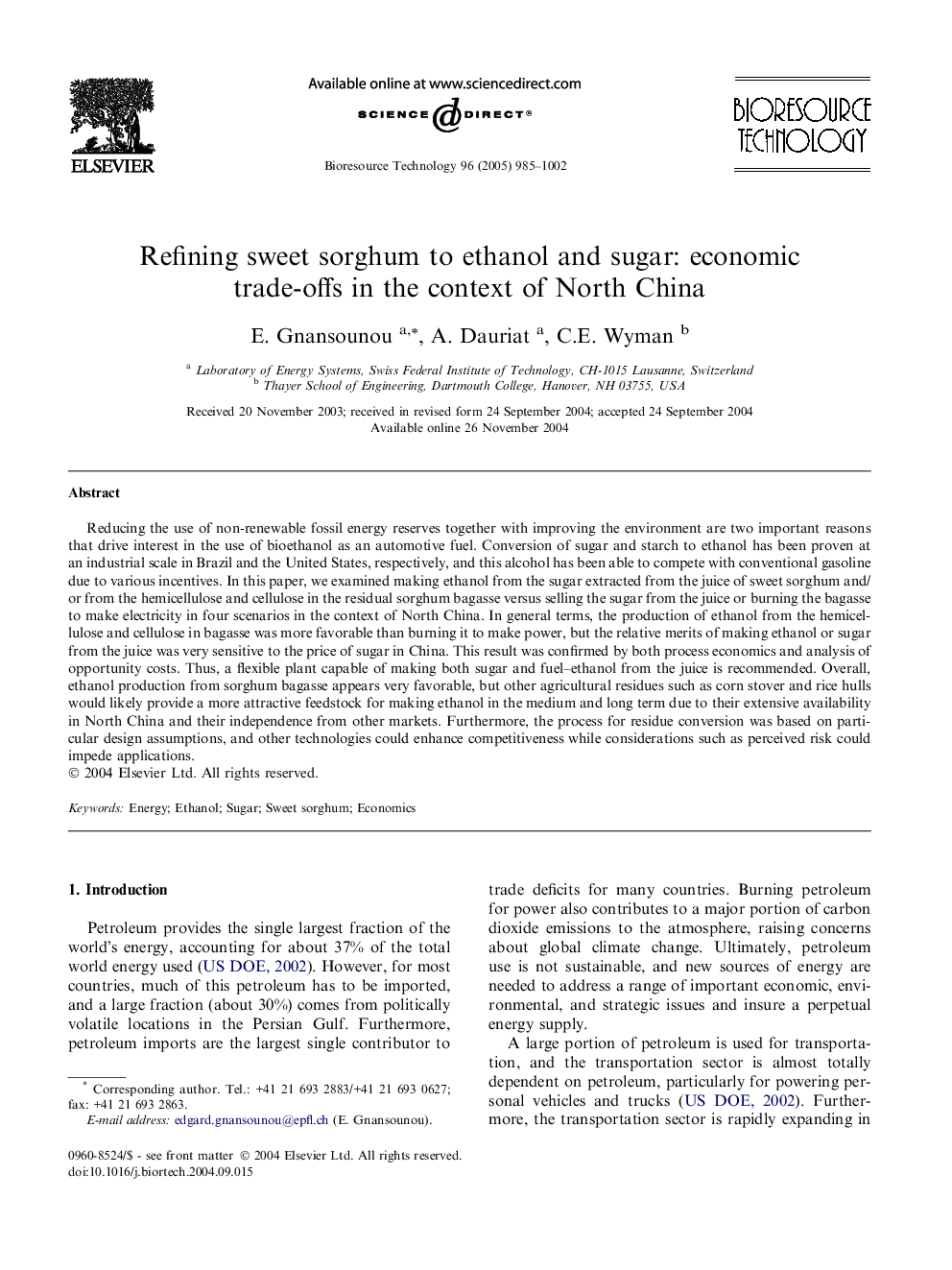| کد مقاله | کد نشریه | سال انتشار | مقاله انگلیسی | نسخه تمام متن |
|---|---|---|---|---|
| 10396093 | 889107 | 2005 | 18 صفحه PDF | دانلود رایگان |
عنوان انگلیسی مقاله ISI
Refining sweet sorghum to ethanol and sugar: economic trade-offs in the context of North China
دانلود مقاله + سفارش ترجمه
دانلود مقاله ISI انگلیسی
رایگان برای ایرانیان
کلمات کلیدی
موضوعات مرتبط
مهندسی و علوم پایه
مهندسی شیمی
تکنولوژی و شیمی فرآیندی
پیش نمایش صفحه اول مقاله

چکیده انگلیسی
Reducing the use of non-renewable fossil energy reserves together with improving the environment are two important reasons that drive interest in the use of bioethanol as an automotive fuel. Conversion of sugar and starch to ethanol has been proven at an industrial scale in Brazil and the United States, respectively, and this alcohol has been able to compete with conventional gasoline due to various incentives. In this paper, we examined making ethanol from the sugar extracted from the juice of sweet sorghum and/or from the hemicellulose and cellulose in the residual sorghum bagasse versus selling the sugar from the juice or burning the bagasse to make electricity in four scenarios in the context of North China. In general terms, the production of ethanol from the hemicellulose and cellulose in bagasse was more favorable than burning it to make power, but the relative merits of making ethanol or sugar from the juice was very sensitive to the price of sugar in China. This result was confirmed by both process economics and analysis of opportunity costs. Thus, a flexible plant capable of making both sugar and fuel-ethanol from the juice is recommended. Overall, ethanol production from sorghum bagasse appears very favorable, but other agricultural residues such as corn stover and rice hulls would likely provide a more attractive feedstock for making ethanol in the medium and long term due to their extensive availability in North China and their independence from other markets. Furthermore, the process for residue conversion was based on particular design assumptions, and other technologies could enhance competitiveness while considerations such as perceived risk could impede applications.
ناشر
Database: Elsevier - ScienceDirect (ساینس دایرکت)
Journal: Bioresource Technology - Volume 96, Issue 9, June 2005, Pages 985-1002
Journal: Bioresource Technology - Volume 96, Issue 9, June 2005, Pages 985-1002
نویسندگان
E. Gnansounou, A. Dauriat, C.E. Wyman,